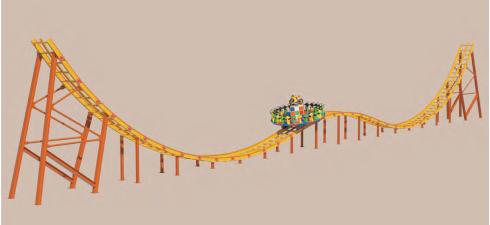- Albanian
- Arabic
- Belarusian
- Bengali
- Czech
- English
- French
- German
- Hebrew
- Hungarian
- Indonesian
- irish
- Italian
- Japanese
- kazakh
- Persian
- Russian
- Thai
- Uzbek
- Vietnamese
different types of roller coaster
Different Types of Roller Coasters
Roller coasters are one of the most exhilarating attractions found in amusement parks worldwide. They offer thrilling rides that vary tremendously in design, speed, and style. Each type of roller coaster caters to different preferences and adrenaline levels. This article will explore the various types of roller coasters, their unique characteristics, and what makes each of them special.
1. Wooden Roller Coasters
Wooden roller coasters are the classic designs that have been thrilling riders for over a century. Known for their nostalgic charm, these coasters feature a structure built from wood, which provides a unique, bumpy ride experience. One of the most famous wooden coasters is the Coney Island Cyclone, known for its steep drops and sharp turns. While they may lack the smoothness of modern steel coasters, wooden coasters offer a charm that is hard to replicate, drawing in enthusiasts who appreciate their historical significance and traditional thrill.
Steel roller coasters revolutionized the amusement park experience in the late 20th century. With a smoother ride experience and the ability to execute more complex maneuvers, steel coasters have become incredibly popular. They often include features such as loops, corkscrews, and inversions that add to the excitement. Notable steel coasters like Kingda Ka in New Jersey, which boasts the title of the world’s tallest coaster, are a testament to engineering advancements and riders' appetite for extreme thrills.
3. Inverted Roller Coasters
Inverted roller coasters take the thrill to the next level by allowing riders to experience the sensation of flying. In these coasters, the seats are suspended below the track, flipping riders upside down during loops and twists. This design provides a unique perspective and a feeling of weightlessness. Examples include “Batman The Ride” at various Six Flags parks, which offers a series of thrilling inversions while hanging from the track.
different types of roller coaster

4. Launched Roller Coasters
Traditional roller coasters typically rely on the initial lift hill to gain speed. Launched roller coasters, however, utilize advanced propulsion systems to propel the train forward at high speeds without the need for a lift hill. This type gives riders an immediate burst of adrenaline, as seen in coasters like Top Thrill Dragster, which accelerates from zero to 120 mph in a matter of seconds, offering an unforgettable rush.
5. Dive Coasters
Dive coasters are designed to take riders on a steep drop that often extends beyond vertical. Riders are slowly lifted to a height before being released into a gut-wrenching plunge. The anticipation as the train pauses at the edge adds to the thrill. “Griffon” at Busch Gardens Williamsburg is a popular dive coaster known for its heart-stopping drop and stunning views.
6. Family Coasters
Not all roller coasters have to be designed for adrenaline junkies; family coasters provide a gentler experience suitable for all ages. These coasters typically have lower heights and milder drops, making them ideal for families with younger children. Examples include “Dumbo the Flying Elephant” and “Flight of the Hippogriff,” which offer fun and excitement without the intensity of larger coasters.
Conclusion
From wooden classics to high-speed steel wonders, roller coasters come in various forms, each offering unique experiences. Whether you prefer the nostalgic thrill of a wooden coaster or the intense rush of a launched ride, there's something for everyone to enjoy at amusement parks around the globe. The diversity in roller coaster design not only caters to various thrill-seeking desires but also continues to push the boundaries of engineering and creativity in the amusement industry.
-
Flume Ride-Hebei Zhipao Amusement Equipment Manufacturing Co., Ltd.|Thrilling Water Attraction&Customizable DesignJul.30,2025
-
Flume Ride - Hebei Zhipao Amusement Equipment | Water Coaster, Thrilling DescentJul.30,2025
-
Flume Ride - Hebei Zhipao | Thrilling Water AttractionJul.30,2025
-
Flume Ride: Thrilling Water Attraction by Hebei Zhipao|Log Flume Manufacturers&Flume Ride DesignJul.30,2025
-
Flume Ride-Hebei Zhipao Amusement Equipment Manufacturing Co., Ltd.|Thrilling Water Coaster, Safe DesignJul.30,2025
-
Flume Ride-Hebei Zhipao Amusement Equipment Manufacturing Co., Ltd.|Thrilling Water Attraction, Safe DesignJul.30,2025
